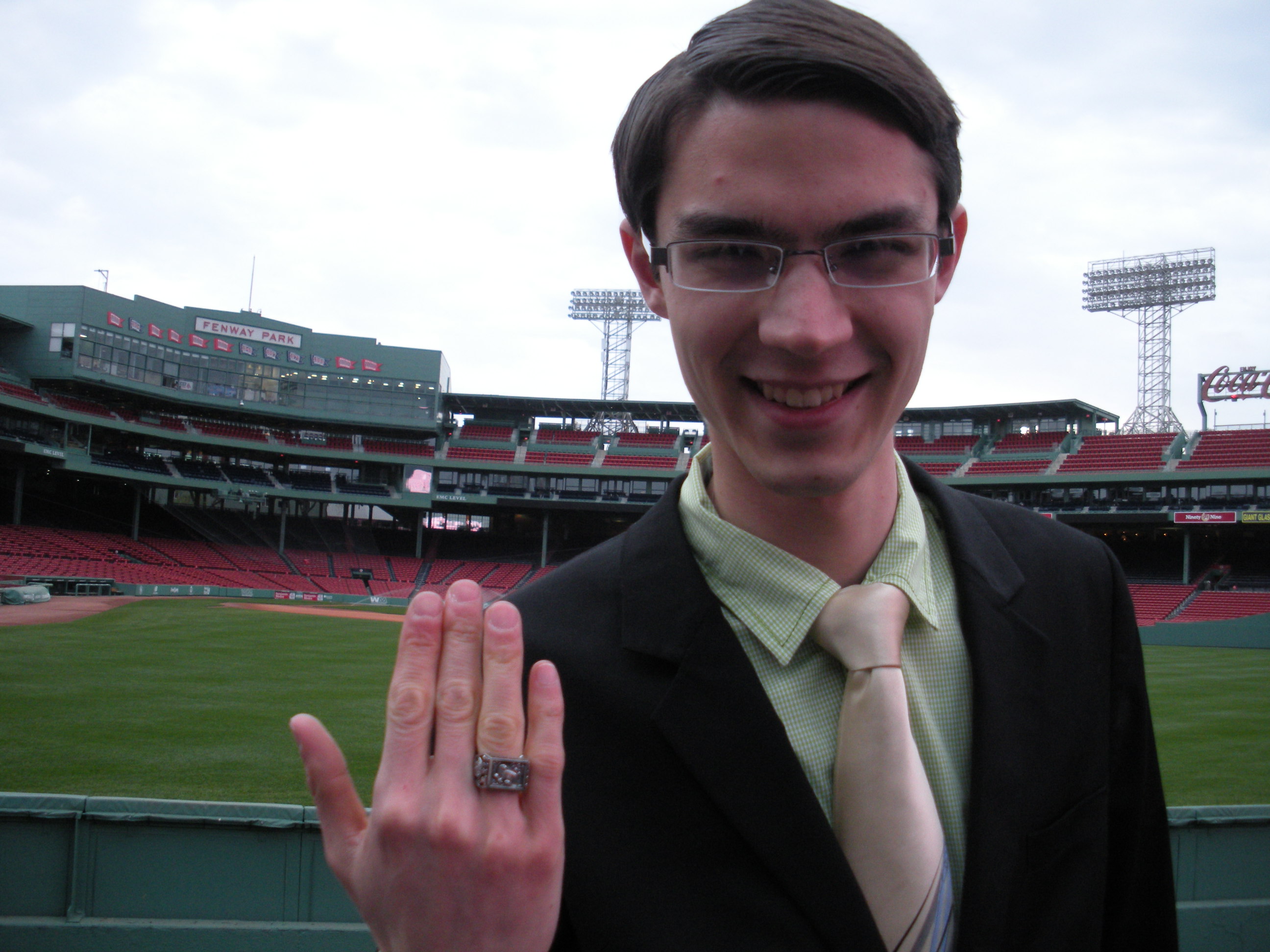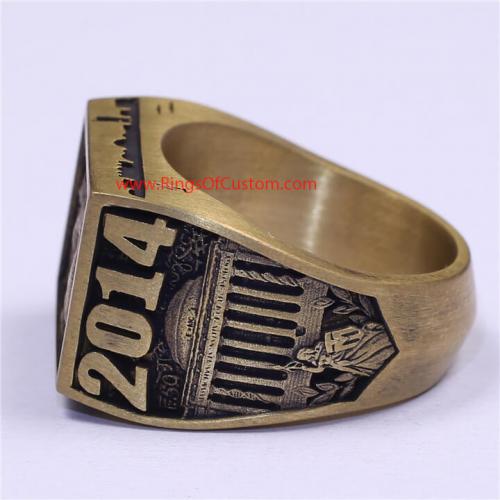
We first thought of the kangaroo which like Tech, goes forward in leaps and bounds. Lester Gardner (SB, 1898) explained the decision: Investigation showed that, on January 17, 1914, President Maclaurin formally accepted the Beaver as the mascot of the Institute at the annual dinner of the Technology Club of N.Y. This precipitated a vigorous discussion concerning the exact status of the Beaver as the Institute mascot. In October the committee submitted its first detailed report to the Institute Committee and requested a decision as to whether the Institute Dome or the Beaver should be used on the face of the ring. Riehl, and its sole purpose was to provide a ring which the Institute Committee would approve as the Standard Technology Ring. Brigham Allen, President of the class of 1929, appointed a ring committee consisting of one member of each of the classes of 1930, 1931, and 1932.

The ring was first proposed in 1929 and labeled the "Standard Technology Ring". The change was not followed by the Class of 1991, but resumed and has continued since the Class of 1992's ring. The tradition of the skylines began with the Class of 1990 ring, for which the mold process in manufacturing was altered from 3 pieces to 5 pieces. The 2010 Brass Rat was the first to incise the "MIT" and "2010" on the shanks of the ring. The 2008 Brass Rat was the first in recent years to revert to the original style of the ring, placing the seal and Dome above the "MIT" and "08" respectively. Ring elements Īlthough parts of the ring change each year, typically the MIT seal is on one shank of the ring, and a depiction of the Great Dome is on the other side. Ring Delivery ceremonies have been held on a harbor cruise, at prestigious restaurants, and at the Boston Public Library. The latter has been a tradition since 1999 (Class of 2001), and is typically a formal occasion. The design is unveiled during the Ring Premiere in the start of the spring term, which is followed months later by the Ring Delivery in the same term. The undergraduate ring is designed and presented in the sophomore year of each class. After graduation, the ring is turned around, and the Cambridge skyline is visible to the graduate, as a reminder of times spent at MIT. In addition, the skyline of Boston is facing the student, representing the outside world awaiting. This represents the hardships imposed on students at MIT. The Brass Rat is traditionally worn on the right hand with the Beaver "sitting" on the wearer until graduation.

The ring is not literally made of brass, and has typically been made in various alloys of gold, platinum, or stainless steel (" The Stainless Steel Rat"). Among other reasons the beaver was chosen as mascot (and therefore for the front bezel of the ring) because it is an American animal, and considered to be "the engineer of the animal world". The phrase "Brass Rat" is derived from the alleged resemblance of the gold (hence brass-like appearance) beaver to a rat. On earlier versions, the Great Dome and Building 10 facade were featured on each shank, with "MIT" under it on one side and the class year on the other. An MIT campus map and the student's name are engraved on the inner surface. The side surfaces of the current ring design show the Boston and Cambridge skylines. The class ring has three main sections: the bezel, containing MIT's mascot, the beaver the MIT seal (seal shank) and the class year (class shank). The ring is redesigned each year by a committee of MIT students. Massachusetts Institute of Technology's class ring, often called the Brass Rat, is a commemorative ring for the graduating class of students at MIT. Commemorative ring for the graduating students


 0 kommentar(er)
0 kommentar(er)
